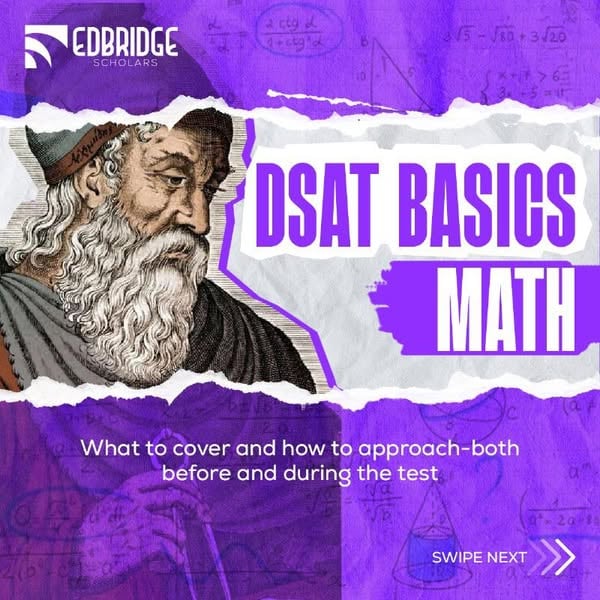Math on the DSAT isn’t just about formulas—it’s about logic, reasoning, and adapting to a smart digital format. This quick guide breaks down what’s covered and how to approach the math section before and during the test.

1. Topics Covered in DSAT Math
The DSAT math section includes a mix of foundational and advanced concepts, applied through both multiple-choice and grid-in formats. Here are the four key topic areas:
🔹 Algebra
Linear equations, inequalities, systems of equations, and algebraic fluency.
🔹 Advanced Math
Quadratics, polynomials, rational expressions, and functions.
🔹 Problem-Solving & Data Analysis
Ratios, percentages, unit conversions, data tables, and interpretation.
🔹 Geometry & Trigonometry
Angles, circles, triangles, area, volume, and basic trigonometric identities.
These areas combine procedural fluency with real-world problem-solving. A solid grip on all four helps you navigate the adaptive sections more confidently.
2. How to Approach DSAT Math
To tackle the DSAT math section effectively, you’ll need to understand its structure and tools:
- ❗ Understand the Adaptive Format:
Your performance in Module 1 determines the difficulty of Module 2. - ❓ Know the Question Types:
Expect a mix of:
- Multiple Choice
- Student-Produced Responses (you enter your answer)
- Multiple Choice
- ⚙️ Use On-Screen Tools Wisely:
The Bluebook™ app provides:
- A built-in Desmos Graphing Calculator
- Mark-for-review and highlighting tools
- A built-in Desmos Graphing Calculator
- Make sure to practice with these tools ahead of time.
- ⏱ Time Management:
You get roughly 1.5 minutes per question. If you’re stuck, flag it and move on—come back later if time allows.
3. How to Get Better at DSAT Math
Improving your math score doesn’t come from repetition alone. These smart strategies can help boost your performance:
- Master Mental Math & Estimation
Fast, rough calculations help eliminate wrong answers quickly. - Focus on DSAT-Specific Patterns
Many questions test real-world reasoning over textbook formulas. Practice with data-heavy problems, graphs, and logic-based questions. - Calculator Skills Matter
Don’t just use the Desmos calculator—train with it. Knowing how to use its graphing features saves time and effort. - Simulate the Real Test Environment
Practice full modules on Bluebook™ or similar platforms. Familiarity with the test format reduces stress on the actual day.
Final Tip
Math on the DSAT is not about cramming formulas—it’s about clear thinking under pressure. Approach each question strategically, build comfort with on-screen tools, and train like it’s game day.





